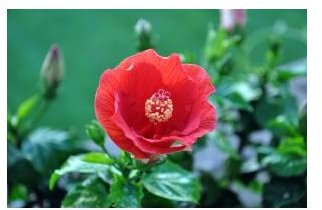Information about Non-Toxic Tree and Shrub Care Including Safe Alternatives to Pesticides and Herbicides
Environmental Effects
The problem with using regular pesticides and fertilizers is the risk of environmental contamination. Many pesticides contain ingredients which are toxic to humans and wildlife. Accidental spills or runoff can leach into aquatic resources, including drinking water.
Pesticides are a last resort for treating weeds and insect infestations. The risk of re-occurrence means that you will have to apply them again and again to get rid of the problem. Non-toxic tree and shrub care offers you ways to treat pests without negatively affecting the environment.
Non-Toxic Pesticides
You have several non-toxic pesticides in your own home. According to the U.S. Department of Agriculture, vinegar is an effective way to treat weeds without using harsh chemicals. You can use it for spot application or to clear out ground cover for new plantings.
Alternatively, a solution of 1-ounce, 3 percent hydrogen peroxide in 1 quart of water will wipe out several types of pests, including weeds, fungi, and some insects. It is also safe to use around trees. For an even simpler solution, simply pour boiling water onto the weeds.
Weed Control
Weeds are the bane of many gardeners. Aggressive and invasive weeds can rob trees and shrubs of precious resources, especially with new plantings. One way you can protect your plants is to apply a layer of mulch around the base of your shrubs and trees.
Mulch will do two things. It will prevent sunlight from reaching the soil surface, depriving germinating weeds of sun needed for food production. It will also prevent the soil temperature from rising. Some plants require soil temperatures to reach a certain point before germinating.
If weeds are encroaching around your plants, you can pull them by hand. While certainly not the easiest method, there is no risk of contamination or polluting the environment.
Insect Control
Insects can weaken your trees and shrubs, making them vulnerable to stress and other diseases. You can protect delicate plants with barriers such as plant collars or netting to keep pests from your trees and shrubs. You can also use horticultural oils and insecticidal soaps to keep pests at bay.
Prevention
An important aspect of non-toxic tree and shrub care is to prevent problems from reoccurring. If you find damage from pests or disease, you should cut off the affected portions, taking care to properly dispose of the clippings to avoid spreading the condition. Likewise, if pulling weeds, don’t let plants stay on the ground. Some plants are capable of taking hold again.
Finally, keeping your trees and shrubs healthy is one of the best defensive strategies against pests. Using organic fertilizers such as bone meal or blood meal will provide plants with the required nutrition for optimal growth. As long as your trees and shrubs can avoid environmental stress and nutrient deficiencies, they have the necessary defense to thrive.
References
Organic Gardening: www.organicgardening.com
John M. Randall and Janet Marinelli (eds.). Invasive Plants: Weeds of the Global Garden. 1996
U.S. Department of Agriculture: Spray Weeds With Vinegar? - ars.usda.gov
